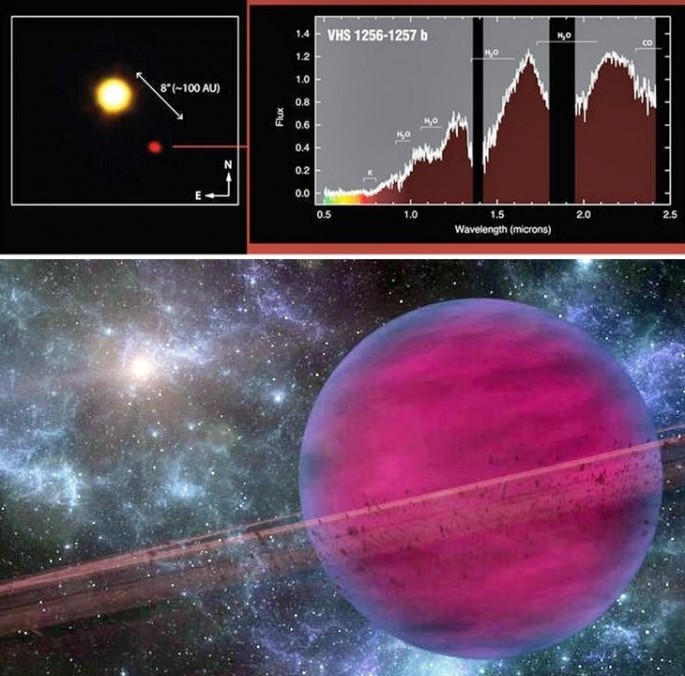A team of Spanish and European scientists have made public photos of the first exoplanet directly imaged from the Earth.
Their study said the exoplanet VHS 1256b is the closest exoplanet to Earth humans have seen with their own eyes. VHS 1256b is a gas giant exoplanet 11 times the mass of Jupiter and only 40 light-years from Earth.
Photos of VHS 1256b are the closest for which a direct image and spectrum of an exoplanet have been obtained to date.
VHS 1256b orbits an M-class or red dwarf star designated VHS J125601.92-125723.9 at a distance around 100 times greater than the distance between the Earth and the Sun. Astronomers estimate this solar system to be somewhere between 150 million to 300 million years old.
The closeness of VHS 1256b to Earth and its massive size made it easier to detect compared to other exoplanets. The exoplanet was photographed by the European Space Organization's VISTA (Visible and Infrared Survey Telescope for Astronomy) in Chile that has a 4.1 meter reflector, and the 10.4 meter Gran Telescopio Canarias on the island of La Palma in the Canary Islands in Spain.
Researchers from the Instituto de Astrofísica de Canarias, the Polytechnic University of Cartagena and the Centre for Astrobiology collaborated on the project.
"It is a gas giant planet with a size similar to that of Jupiter, but 11 times more massive," said Bartosz Gauza, first author on the paper available on arXiv.
"As it is young, its atmosphere is still relatively warm, around 1,200 degrees Celsius, and it is still sufficiently luminous for us to be able to detect it with the VISTA telescope of the European Southern Observatory."
Capturing VHS 1256b's spectrum, however, required more effort.
Study co-author Victor Sanchez Bejar said that in VHS 1256b's atmosphere, "we have found traces of water vapor and of alkali metals, which are normal for this type of planet, but not of methane, which is also expected at these temperatures".
Bejar is a researcher for the Instituto de Astrofísica de Canarias (IAC), an international research center in Spain.
"Due to its youth and proximity, we have been able to obtain for the first time in great detail the spectrum of an exoplanet in the visible. We needed to use a large diameter telescope: the Gran Telescopio Canarias, with the OSIRIS (spectrograph) instrument", he added.
VHS 1256b can be used to study phenomena very difficult to see on other planetary systems such as comet impacts or even the detection of moons comparable in size to Earth, according to Cnet.



























